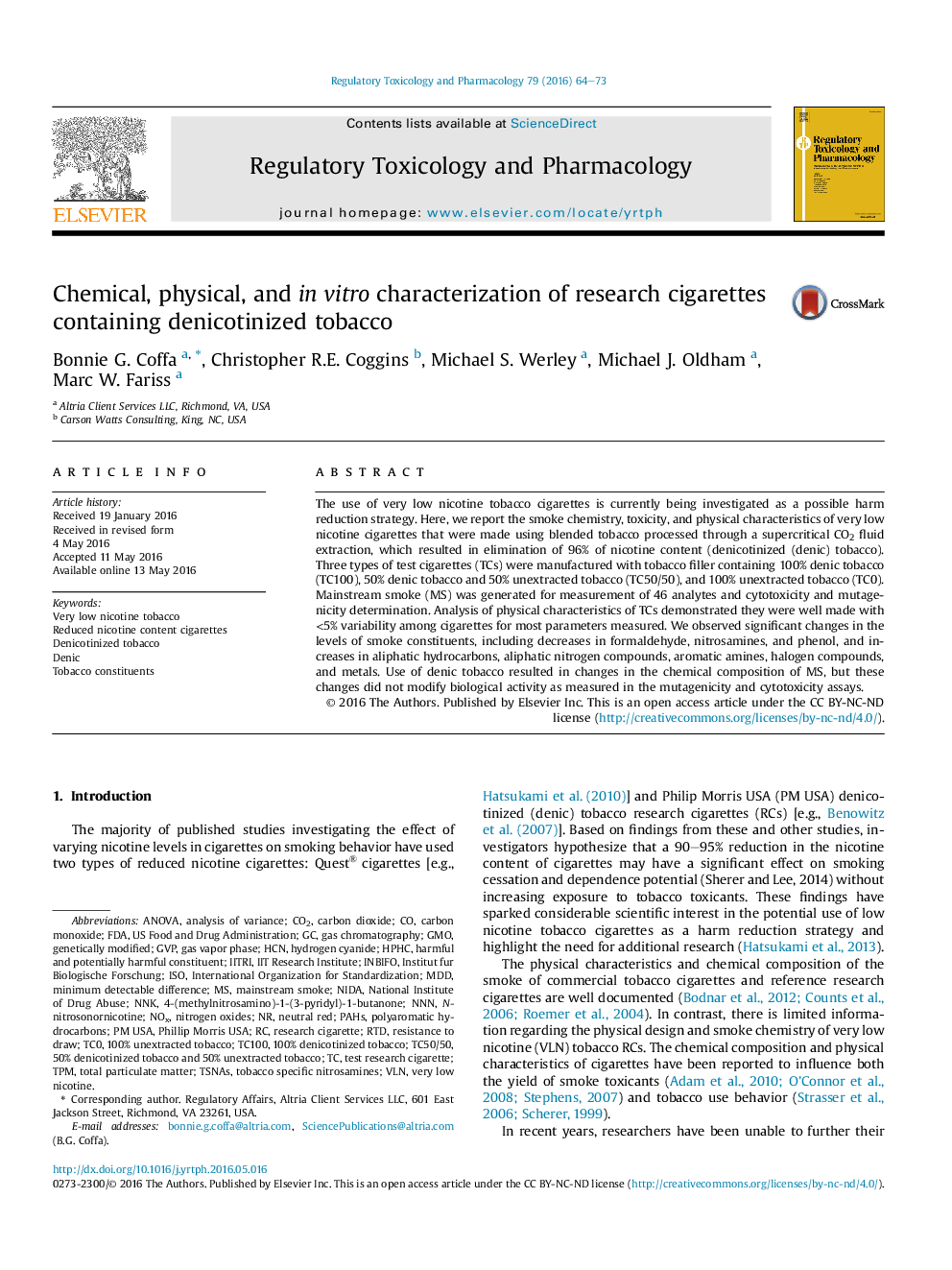| Article ID | Journal | Published Year | Pages | File Type |
|---|---|---|---|---|
| 5856047 | Regulatory Toxicology and Pharmacology | 2016 | 10 Pages |
â¢Low nicotine cigarettes are studied for impact upon cessation, dependence.â¢Little is reported on chemical and in vitro effects of low nicotine cigarettes.â¢This study uses blended tobacco from a supercritical fluid extraction process.â¢We report on physical attributes, composition of smoke, and in vitro toxicology.â¢Significant smoke constituent changes had little impact on Ames and NRU assays.
The use of very low nicotine tobacco cigarettes is currently being investigated as a possible harm reduction strategy. Here, we report the smoke chemistry, toxicity, and physical characteristics of very low nicotine cigarettes that were made using blended tobacco processed through a supercritical CO2 fluid extraction, which resulted in elimination of 96% of nicotine content (denicotinized (denic) tobacco). Three types of test cigarettes (TCs) were manufactured with tobacco filler containing 100% denic tobacco (TC100), 50% denic tobacco and 50% unextracted tobacco (TC50/50), and 100% unextracted tobacco (TC0). Mainstream smoke (MS) was generated for measurement of 46 analytes and cytotoxicity and mutagenicity determination. Analysis of physical characteristics of TCs demonstrated they were well made with <5% variability among cigarettes for most parameters measured. We observed significant changes in the levels of smoke constituents, including decreases in formaldehyde, nitrosamines, and phenol, and increases in aliphatic hydrocarbons, aliphatic nitrogen compounds, aromatic amines, halogen compounds, and metals. Use of denic tobacco resulted in changes in the chemical composition of MS, but these changes did not modify biological activity as measured in the mutagenicity and cytotoxicity assays.
